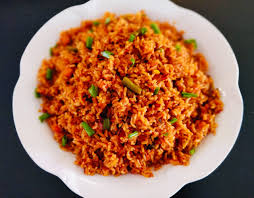Jollof Rice History:
The Fascinating History of Jollof Rice:
Jollof rice, a flavorful and aromatic dish, has a rich history that spans centuries and crosses borders. Its origins are steeped in tradition, culture, and the culinary exchange of the African diaspora.
Ancient Roots:
The history of jollof rice can be traced back to the ancient empires of West Africa, particularly the Wolof and Mande kingdoms. The dish is believed to have evolved from a traditional Mande recipe called "tamaru," made with rice, meat, and vegetables.
Transatlantic Influence:
The transatlantic slave trade and colonialism played a significant role in the spread of jollof rice throughout the African diaspora. Enslaved West Africans brought their culinary traditions to the Americas, where they adapted to new ingredients and cooking techniques.
Regional Variations:
Today, jollof rice is enjoyed in various forms across West Africa, with each country adding its unique twist. Ghana, Senegal, Mali, Sierra Leone, and Nigeria are among the countries that claim ownership of the dish.
Global Popularity:
Jollof rice has gained international recognition, with its flavors and aromas captivating palates worldwide. It has become a symbol of African cuisine, cultural exchange, and the resilience of traditional cooking methods.
In Summary:
Jollof rice is more than just a dish; it's a testament to the rich cultural heritage and historical connections that bind West Africa and the African diaspora together. Its evolution is a reflection of the region's dynamic culinary landscape, shaped by tradition, innovation, and the unifying power of food.
Jollof Rice Ingredients:Here are the ingredients for Jollof Rice
Jollof Rice Ingredients:
- Tomatoes
- Red bell pepper
- Red onion
- Fresh ginger
- Garlic
- Scotch bonnet pepper
- Vegetable oil
- Rice
- Paprika powder
- Dried thyme
- Nutmeg
- Bay leaf
- Salt
- Vegetable or meat stock
- Tomato paste
- Curry powder
- Black or white pepper
- Chicken bouillon powder
- Butter (optional)
- Fresh vegetables (optional)
Tags:
African-Foods


